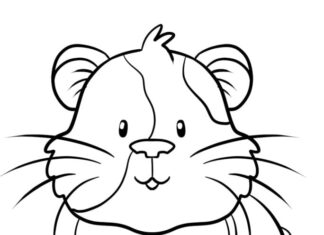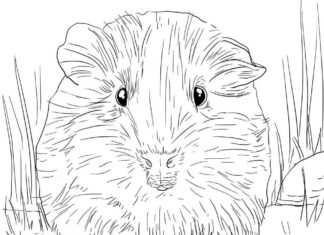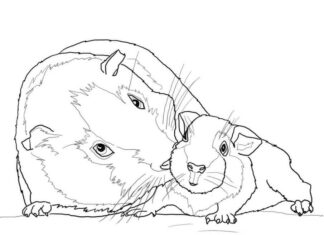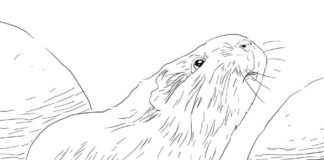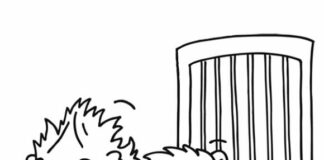The guinea pig is a small rodent in the Caviidae family. They are popular pets and are often kept as companion animals.
Guinea Pig Coloring Pages
information
- Origins: Guinea pigs are native to South America, where they live in their natural habitat in the Andes Mountains. They were originally raised by the indigenous peoples of South America as a food source.
- Appearance: Guinea pigs have a stocky body, short legs and distinctive small ears. They are available in a wide variety of fur colors and patterns, such as solid colors, patches or stripes.
- Character: Guinea pigs are known for their friendly nature. They are social animals that enjoy the company of other guinea pigs. They also tend to be gentle and friendly toward people, although each guinea pig can have its own individual character.
- Communication: Guinea pigs make distinctive sounds such as squeaking, purring and whistling. These sounds are often a form of communication among themselves and with their owners.
- Social behavior: Guinea pigs are herd animals, which means that in the wild they live in groups. In domestic breeding, they also usually feel best in the company of other pigs.
- Diet: Guinea pigs are herbivores and feed mainly on fresh vegetables, fruits, hay and specialized rodent foods. It is worthwhile to ensure a proper and varied diet to keep them healthy.
- Care and Environment: Guinea pigs require a proper cage or enclosure where they can roam freely. It is important to provide them with proper living conditions, including clean water and cleanliness in the cage.
- Reproduction: Guinea pigs are ready to reproduce at a young age, making reproductive control important to prevent over-population.
- Life expectancy: In domestic breeding, guinea pigs can live from 5 to 7 years, although they can sometimes live up to 8 years or more if they are properly cared for.
trivia
- Lack of calm: Despite their name, guinea pigs are neither pigs nor do they live in water. They derive their name from the distinctive sound they make, which resembles the grunting of pigs.
- Social species: Guinea pigs are very social and need the constant company of other pigs. Guinea pigs that are lonely may experience stress and weakness.
- Eating your own feces: Guinea pigs practice what is known as coprophagia, or eating their own feces. This is because of their need to supply themselves with vitamins, such as vitamin B, produced by bacteria in their intestines.
- A wealth of sounds: Guinea pigs can make a variety of sounds that serve communicative functions. Beeping, whistling, purring - each sound has its own meaning among other pigs.
- Sight and hearing: Their poor eyesight is compensated for by their advanced hearing and sense of smell. In the wild, they are capable of sensing approaching danger even from a distance.
- Teeth grow throughout life: As with other rodents, guinea pigs' teeth grow throughout their lives. Therefore, it is important to give them a proper diet and abrade their teeth by chewing on hay and hard foods.
- Complicated anatomy: Although guinea pigs are relatively small, their digestive system is quite complex, making them capable of digesting plant fibers.
- Diversity of breeds: There are many different breeds of guinea pigs with different shapes, hair lengths and fur patterns. Each breed has its own unique characteristics.
- The first domesticated rodents: Guinea pigs were among the first rodents domesticated by humans, both as a food source and as companions.
- Heat sensitivity: Due to their origin in the mountainous areas of South America, guinea pigs are sensitive to high temperatures. On hot days, they require adequate cooling.

